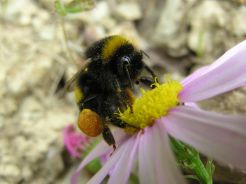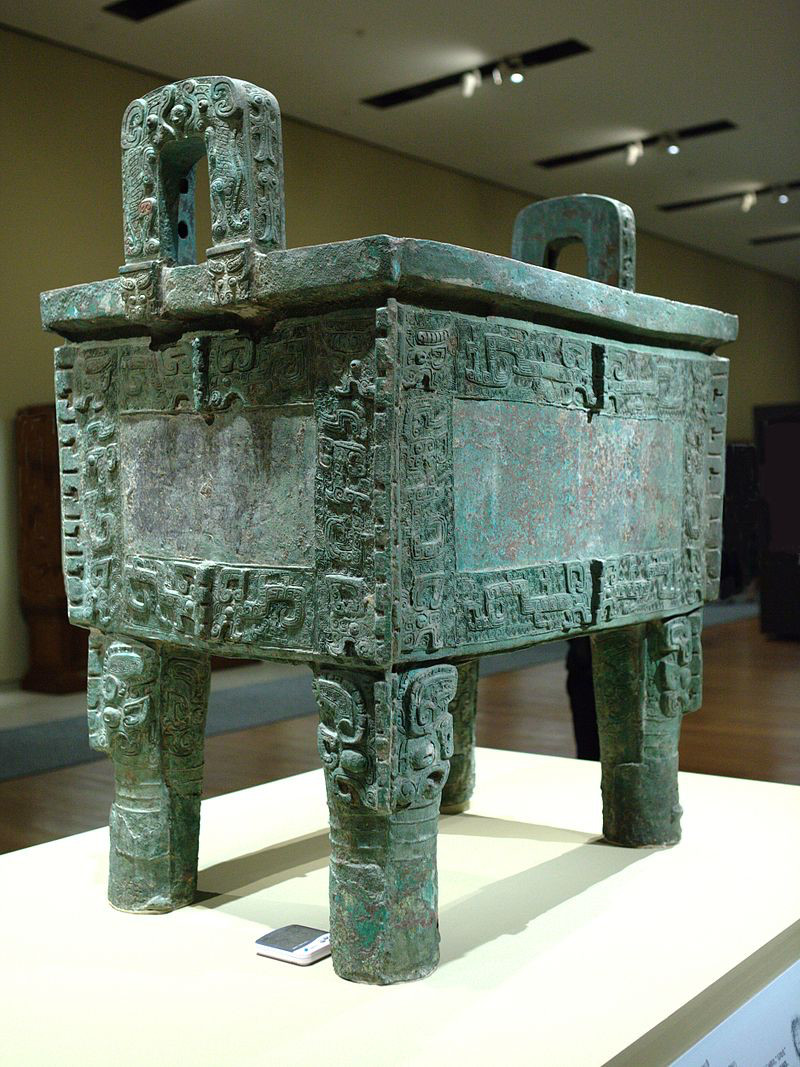01蜜蜂
蜜蜂社会繁殖的过程,worker bees,nurse bees , foraging bees各自的职责,因为受着体内各种激素的影响。
随着worker的长大,他的工作由cleaner变成了larvae feeder。
蜜蜂巢穴内没有指令,但是他们依然能够根据巢穴内食物的丰富度来判断要不要在low-yield flower上采蜜。
主要生词:hive,male bees. Drones , swarm hatch, colony,bee larvae,nectar, pollen。
高度类似原文见文章后面。

类似文章:2015.7.12 Honeybee Society

02中国商周时期的青铜器
青铜器的生产过程,以及商代何周朝时期的青铜器的不同用途
青铜的文章在TPO当中并不多见,本篇文章很多同学反应难度比较大,但是TPO当中不乏对于copper的描述(见下面两段)。并且,TPO中也出现过类型结构的文章,中国的陶瓷,谈论不同时代的陶瓷的特点。

结构类似文章:TPO10-(1) Chinese Pottery
A major development was the discovery, again about 3000 B.C.E., that if copper, which had been known in Mesopotamia since about 3500 B.C.E., was mixed with tin, a much harder metal, bronze, would result. Although copper and stone tools continued to be used, bronze was far more successful in creating sharp edges that could be used as anything from saws and scythes to weapons. The period from 3000 to 1000 B.C.E., when the use of bronze became widespread, is normally referred to as the Bronze Age.(TPO)
Iron came from West Asia, although its routes of diffusion were somewhat different than those of agriculture. Most of Africa presents a curious case in which societies moved directly from a technology of stone to iron without passing through the intermediate stage of copper or bronze metallurgy, although some early copper-working sites have been found in West Africa. Knowledge of iron making penetrated into the forest and savannahs of West Africa at roughly the same time that iron making was reaching Europe. Evidence of iron making has been found in Nigeria, Ghana, and Mali. (TPO)
Bronze, or bronze-like alloys and mixtures, were used for coins over a longer period. Bronze was especially suitable for use in boat and ship fittings prior to the wide employment of stainless steelowing to its combination of toughness and resistance to salt water corrosion. Bronze is still commonly used in ship propellers and submerged bearings.
In the 20th century, siliconwas introduced as the primary alloying element, creating an alloy with wide application in industry and the major form used in contemporary statuary. Sculptors may prefer silicon bronze because of the ready availability of silicon bronze brazing rod, which allows colour-matched repair of defects in castings. Aluminium is also used for the structural metal aluminium bronze.
It is also widely used for casting bronze sculptures. Many common bronze alloys have the unusual and very desirable property of expanding slightly just before they set, thus filling in the finest details of a mould. Bronze parts are toughand typically used for bearings, clips, electrical connectorsand springs.
Bronze also has very low frictionagainst dissimilar metals, making it important for cannonsprior to modern tolerancing, where iron cannonballs would otherwise stick in the barrel.[24]It is still widely used today for springs, bearings, bushings, automobile transmission pilot bearings, and similar fittings, and is particularly common in the bearings of small electric motors. Phosphor bronzeis particularly suited to precision-grade bearings and springs. It is also used in guitar and piano strings.
Unlike steel, bronze struck against a hard surface will not generate sparks, so it (along with beryllium copper) is used to make hammers, mallets, wrenchesand other durable tools to be used in explosive atmospheres or in the presence of flammable vapors. Bronze is used to make bronze woolfor woodworking applications where steel woolwould discolour oak.
Phosphor bronzeis used for ships' propellers, musical instruments, and electrical contacts.[25]Bearingsare often made of bronze for its friction properties. It can be filled with oil to make the proprietary Oiliteand similar material for bearings. Aluminium bronzeis very hard and wear-resistant, and is used for bearings and machine tool ways. -----from Wikipedia

03植物的 energy distribution
落叶常绿,一年生,如何在一年中分配获得得营养。

04蛾子
自然选择环境因素对蛾子的影响,一种白色蛾子,一种黑色的。开始白色蛾子活的好,黑蛾子不好,因为会被发现。之后,工业革命了,树干都黑了,于是白蛾子都要死翘翘了,但是之后开始治理环境,白蛾子又多了,黑蛾子又少了。

05煤炭和英国的工业化
工业化和煤炭的话题出现的非常多,主要内容会围绕着energy的问题来讨论,steam energy出现后是的coal mine可以挖掘的更深,因为矿井里的水可以用steam驱动的pump抽出来了。工业化得到了更多的动力。
类似文章:TPO26-(1)Energy and the Industrial Revolution
原文见文章后面。

06植物生长的方式
一年生的植物,常绿的植物,落叶的植物,针叶的植物。
生词:annual ,therophyte, deciduous plants,evergreen.

07欧洲文明
欧洲某地的艺术,比玛雅文明还要古老。推测是很多古老文明的起源。
类似文章:TPO53 Paleolithic Cave Paintings
TPO52 Natufian Culture

08动物对风的利用
动物在风大的时候可以顺着风飞,中等风的时候可以如何调整飞行顺着风飞。并且有察觉风状态的器官。
类似文章:2015.9.12 Gliding and Soaring

0919世纪蒸汽机出现的影响
19世纪蒸汽机出现的影响,工业的发展和人们的生活,蒸汽时代兴起,工人被严格管理。
类似文章:TPO6-(1) Powering the Industrial Revolution
TPO 34 - TheDevelopmentofSteamPower

10蝙蝠
echolocation and flight讲蝙蝠利用超声波,以及如何进化的,还有和飞行的关系。

Echolocation
Microbats and a few megabats emit ultrasonic sounds to produce echoes. By comparing the outgoing pulse with the returning echoes, the brain and auditory nervous system can produce detailed images of the bat's surroundings. This allows bats to detect, localise, and classify their prey in darkness. Bat calls are some of the loudest airborne animal sounds, and can range in intensity from 60 to 140 decibels. Microbats use their larynxto create ultrasound, and emit it through the mouth and sometimes the nose. The latter is most pronounced in the horseshoe bats (Rhinolophusspp.). Microbat calls range in frequency from 14,000 to well over 100,000Hz, extending well beyond the range of human hearing (between 20 and 20,000Hz). Various groups of bats have evolved fleshy extensions around and above the nostrils, known as nose-leaves, which play a role in sound transmission.-----from Wikipedia

11鱼怎么呼吸 用 gill 和 bubble
A gillis a respiratory organfound in many aquaticorganisms that extracts dissolved oxygenfrom waterand excretes carbon dioxide. The gills of some species, such as hermit crabs, have adapted to allow respiration on land provided they are kept moist. The microscopic structure of a gill presents a large surface areato the external environment. Branchia(pl. branchiae) is the zoologists' name for gills (from Ancient Greek).----------from Wikipedia

词汇题还原
Critical=essential
Exploit=introduce
Deplete=used up
Fix=repair
Automated=mechanized
Scant=little
Stagnant=unmoving
Multifaceted=in all sides
Enable=allow
Anticipation=expectation
Estimate=prediction
Desirable=Necessary
Adopt=Take on
Discernible=visible
Shrink=smaller

Honeybee Society
Honeybee colonies are essentially societies of females. In a hive of perhaps 20,000 bees, only a few hundred will be male bees, called drones. ■They are around only in the spring or summer long enough to rise to treetop level in a comet-like swarm, chasing after one of the queen bees that have assembled from various hives at a mating site.■Of the many drones assembled, only 10 to 15 will actually mate with a queen during one of her mating flights. ■ Each drone that is successful dies in the process, however, and a similar fate awaits drones that aren't successful; once mating is done, they will be expelledfrom their hives or killed. ■
The week of mating flights prepares the queen for a lifetime of prodigious egg laying; she will produce up to 2,000 fertile eggs a day for years. Nearly all of the offspring that hatch from these eggs are female; they are the hive's worker bees; and they are well named, for it is they who will maintain the hive, forage for food, store the food away, care for newly laid eggs, and more. It is they who will do everything for the colony, in other words, except lay eggs and mate with the queen.
Over their brief adult lives of perhaps six weeks, every worker bee takes on, in a predictable order, nearly all the worker tasks that the hive has to offer. For the first three days of her life, a worker is primarily a cleaner of the cells that the bee larvae (immature, wormlike bees) are stored in. As the days pass, she becomes primarily a larvae feeder, then a hive construction worker, then an entrance guard and food storer, and finally a forager, going out to secure nectar, pollen, and water for the colony. Within this structure, however, a worker's life is one of surprising flexibility. After becoming a construction worker, for example, she still engages in some cell cleaning; and throughout her life, she spends a good deal of time resting and patrolling the hive.
Importantly, there is no chain of command in a colony no group of workers communicating the message more food needed now or cell cleaning needed over here. How, then, does all this work get organized among tens of thousands of bees? Bees are promptedto act either because of environmental conditions (the temperature of the hive, for example) or because of signals or cues they receive from other bees. The signals are explicitacts of communication, as with the famous waggle dance that bees perform to inform their fellow workers of the location of food sites.
Quite often, however, bees are reacting to cues they get from other bees that simply imply a given condition. Take, as an example, a cue that researcher Thomas Seeley confirmed that has to do with unloading time at the hive. In a well-fed hive, forager bees gather food only from flower patches that have lots of nectar. When a hive is near starvation, however, the foragers aren't so choosy; then low-yield flower patches will do. So, how does a forager know whether to be choosy or not?How is she informed of the nutritional status of the colony, in other words? Her informational source is the length of time it takes her to unload her food. Providing the cues are the food-storer bees, which receive the food the foragers bring back and then process it into honey and pack it away in the hive. It takes a returning forager a relatively long time to make contact with a food-storer bee in a well-fed hive, but a relatively short time in a starving hive. Why? Because in a well-fed hive, the food storers have to keep them busy when there is plenty of food to store away. If, however, a forager can make contact with a food storer within 15 seconds of entering the hive, the forager knows the colony is low on food and will start paying visits to low-yield sites. This is but one example of how life in the colony is self-organizing; each bee's behavior is shaped by the behavior of other bees.

2015.9.12 Gliding and Soaring
Paragraph 1:Gliding is gravity-powered flight where the movement of the glider has a downward tilt. But many birds are capable of ascending without flapping their wings, and this is called soaring. Birds usually soar by finding air that is rising as fast as or faster than the gliding bird's sinking speed. For example, a turkey vulture might glide with a sinking speed of about 0.8 meters per second. If the vulture can find a place where the air is rising at 0.8 meters per second, it will be able to maintain a constant altitude. If it finds air rising faster than that, it will be able to climb.
Paragraph 2:Two common processes produce updrafts, or rising air. When heated air rises, it is called a thermal, and when wind blows up a hill or over a large obstacle, it is called ridge lift or slope lift. Thermals occur when the Sun heats some parts of the ground more than others. For example, a freshly plowed field may heat up faster than an adjacent meadow. The warm ground heats the air above it, and the air starts to rise. As the warm air rises, it is replaced by cool air from the surrounding terrain, and this new air is heated until it rises. Thermals may be continuous chimneys of rising air, or a series of discrete, doughnut-shaped bubbles (ring thermals) formed at intervalsby the warmed ground.
Paragraph 3:If they could be made visible, ring thermals would look like giant, rising smoke rings. Some airplane pilots and biologists disagree about the exact form of continuous thermal chimneys. Pilots have traditionally interpreted thermals as large, tall columns of rising air, usually with a cumulus (white, fluffy) cloud marking the top of the column. In contrast, observers of animal flight find only small, localized thermal chimneys, which usually take the form of dust devils, which are small columnar thermals with intense rotation. Colin Pennycuick, a prolificresearcher on bird flight, discounts thermal chimneys and recognizes only ring thermals as sources of large-scale, long-lasting updrafts. In any case, thermals can rise 2 or 3 kilometers above the ground. Also, they tend to increase in size and intensity as they rise, sometimes reaching over 1,000 meters in diameter. Thermals are usually capped by a cloud, because the upper limit of a thermal is set by the altitude where the temperature is low enough to condense water vapor in the thermal, which cools the air and forms a cloud.
Paragraph 4:As long as the upward speed of the thermal is greater than the sinking speed of a glider, the glider will ascend in the thermal. Of course, the glider will quickly fly out of the thermal if it flies in a straight line, so it must circle to stay in the rising air. (A glider should stay on the inside of the ring, because the air on the outer edge of the ring is actually rolling downward.) Imagine a vulture ascending to 1,500 meters above the ground by circling in a ring thermal. From this height, it will be able to fly out of the thermal and glide for about 30 minutes (traveling over 23 kilometers) before it runs out of altitude and needs to either start flapping, find another thermal, or land. Many soaring birds use just this pattern: climbing up in a thermal, gliding a long distance, then finding another thermal in which to soar. This type of flight is an efficient way to cover long distances at a low energy cost, making it a handy way to migrate or search for food.
Paragraph 5: Slope soaring is useful when wind blows upward along a slope. The speed of the wind's upward motion can be calculated in the same manner that the sinking speed of a glider is calculated. If the upward speed of this wind is greater than or equal to the sinking speed of a glider, the glider will be able to maintain altitude. Such ridge lift has a characteristic that is both an advantage and a disadvantage: ridge lift is usually predictably tied to a particular slope, so it is easy to find. But it is usable only in that fixed, local area.

李雪艳
教授科目:TOEFLREADING
教师简介:
●教龄六年,时长近10000小时,所带学员多样化,善于快速把握学员问题症结点。
●钻研托福阅读出题趋势,多次命中考试题目,其中独家编纂教材词汇题命中率88.3%
●编纂6本教学内部书籍,发表40余篇学术类文章。
●教师资格证持有者
▼往期精彩回顾▼3月3托福口语写作考情分析!旧题再现!考前提分安排!SAT语法(3月考前必背10个易错点)GRE免费模考开始报名啦!
想要了解更多“留学、AP、国际班”等相关课程,
扫描下方二维码加大队长为好友

大队长等你撩~
目前20000+人已关注加入我们






















 03植物的 energy distribution
03植物的 energy distribution
 04蛾子
04蛾子



























